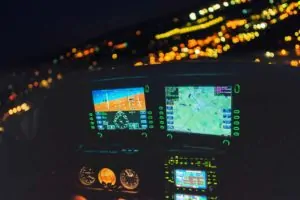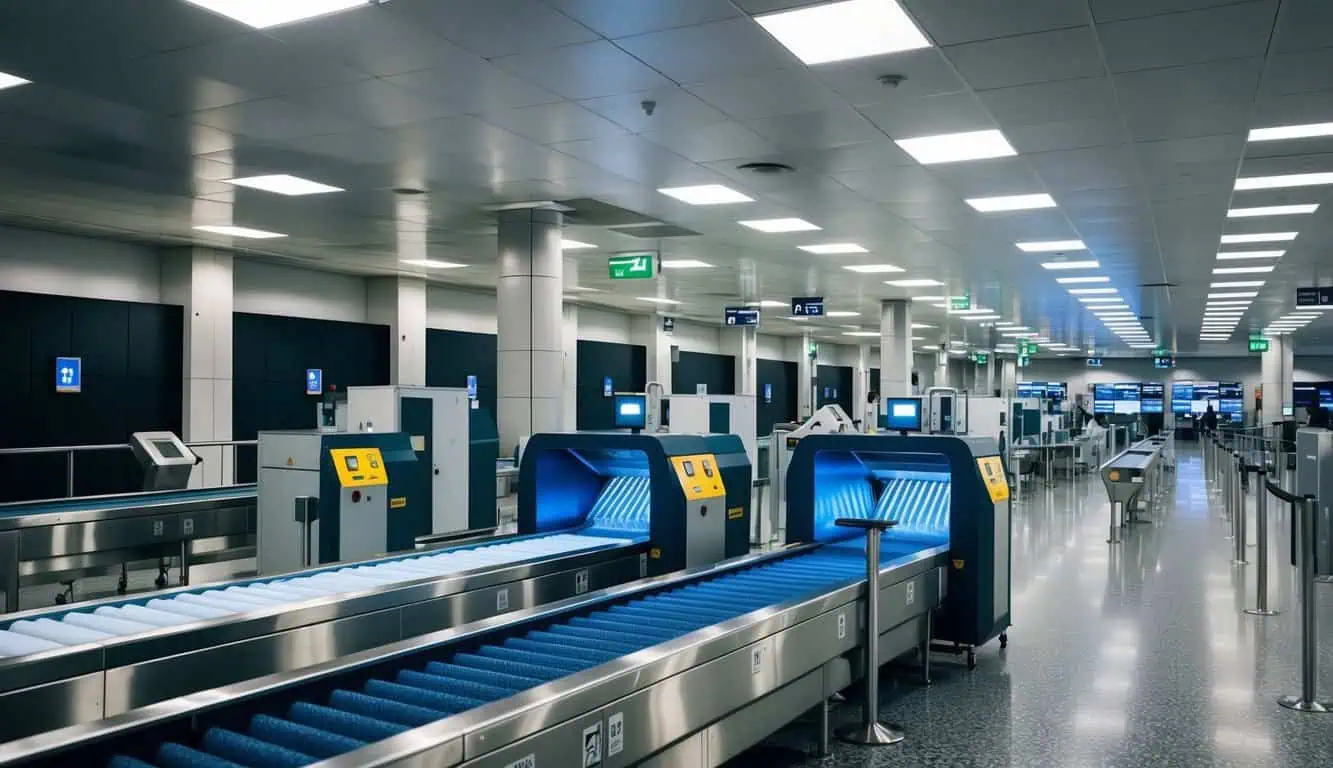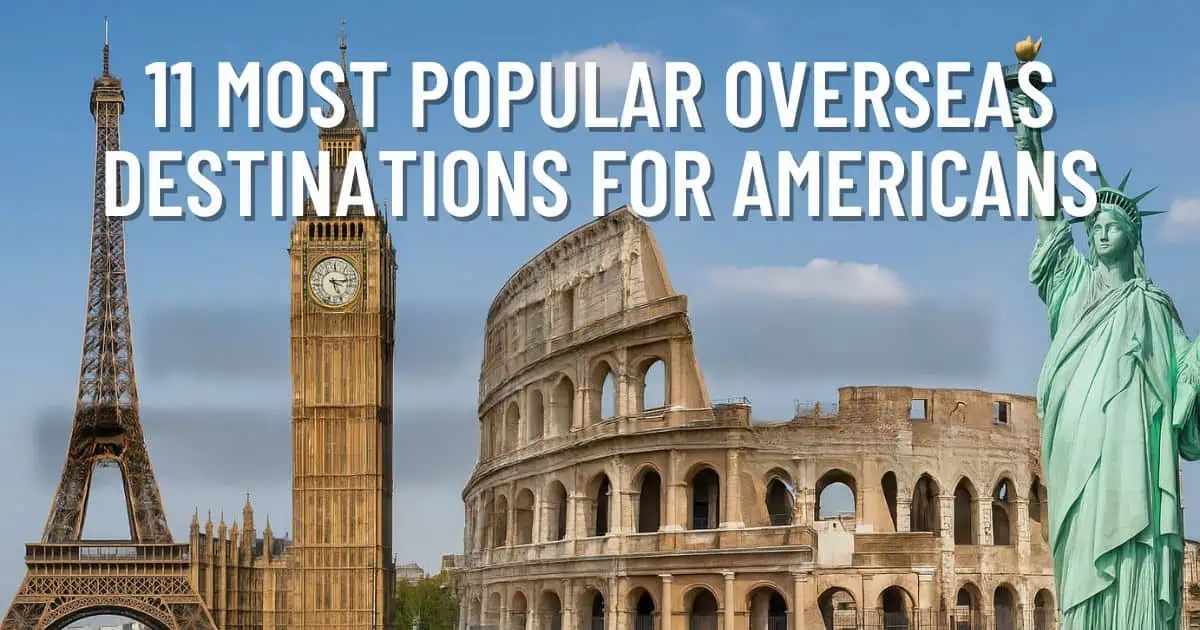The serene beauty of a city’s lights from thousands of feet above, the calmness of the night sky, and the allure of a quieter airport – flying at night offers a unique experience.
But with this nocturnal journey comes a question that has crossed the minds of many travelers: “Is it safe to fly at night?”
In this post, we’ll delve into the intricacies of nighttime aviation, comparing safety records, understanding the challenges pilots face, and shedding light on the measures airlines take to ensure your journey through the stars is as safe as during the day.

The Quick Answer: Is flying at night safe? Flying at night is extremely safe for commercial flights these days. This is due to all of the aids available both inside the cockpit and on the ground. In fact, there is hardly any difference between flying at night or during the day on a commercial flight and there are no more nighttime accidents than daytime accidents.
When I saw the question “How safe is flying at night” asked on a forum recently it made me think as it is not something I have thought about before even though I have flown at night many times.
It is certainly very safe to fly at night so why do people feel apprehensive about it? Perhaps it is just a lack of knowledge. Knowing what aids are available to a pilot to “see in the dark” might help but first think about driving at night …..
Contents
Driving at night

Most people don’t think twice about driving themselves, or being driven by someone else, at night.
The only aid that drivers have to drive safely is their eyes. On a dark night, vision is greatly impaired compared to driving in the daytime. The other drivers on the road are also in the same position of course. Added to that, some may be drunk or reckless too, so they also present a hazard to you.
Yet, despite all of this, 99.99% of journeys by car are completed safely at night. Now compare that to flying on a commercial flight as a passenger at night.
Is it safer to fly at night or day?
Although many short flights are flown during daylight, most long haul flights will include a certain amount of night flying. This is particularly true when flying west to east as the days are effectively shortened. I have traveled from London to New Zealand and flown through two nights on that journey before reaching Auckland.
One factor which actually makes night flights safer than during the day is that generally there are fewer aircraft in the sky at night so fewer aircraft to avoid.

So how do pilots fly at night? What aids do modern pilots have in addition to their eyes?
1. Air Traffic Control
Aircraft are constantly monitored by a network of air traffic control centers all along their route. They are able to do this using sophisticated radar that not only shows where aircraft are but also at what height they are flying. Air traffic controllers use this information to give instructions to pilots to ensure adequate separation from other aircraft and also route information.
On international flights aircraft are passed from one country’s ATC to another when they approach a border.

2. Radar
As well as the air traffic controllers on the ground having radar, all modern aircraft are also equipped with onboard radar.

Aircraft radar is very sophisticated as not only does it show where other aircraft are but it now incorporates a computer-controlled TCAS (Traffic Collision Avoidance System). This system warns the pilot of any possibility of collisions and even tells him what to do to avoid a collision which may be to climb or descend.
Two aircraft equipped with this system that are on a collision course actually communicate with each other and decide which should climb and which should descend before informing the pilots. As well as avoiding collisions with other aircraft these systems also advise of potential collisions with mountains etc.
Aircraft radar can also incorporate weather radar displays to allow a pilot to avoid flying through storms or other weather fronts.

In the earlier days of long-range flying, aircraft navigated at night using a combination of dead reckoning and astro-navigation (navigation using the stars). Yes, some aircraft actually had a nautical sextant mounted in the roof of the cockpit that the navigator used to determine the position of the aircraft, after some complicated calculations.
Nowadays things are rather different. Modern aircraft have computerized navigation systems that use, among other things, GPS to know precisely where they are.
A pre-planned route can be entered into the navigation computer so the autopilot follows the route precisely. Pilots can alter the route if instructed to do so by air traffic control or to avoid weather problems.
All modern airliners have a system called the ground proximity warning system that warns pilots if they are getting close to the ground.
4. Landing aids

Of course there are runway lights so the pilot can see the runway in good visibility but there are also many systems to help pilots fly towards the runway when they fly at night.
To assist with finding their way onto the runway at night, or in cloud, there is a system used throughout the world called the ILS (Instrument Landing System). This incorporates two radio waves, called the localizer and the glideslope. The localizer sends out a signal along the centerline of the runway. The glideslope sends out a signal at a particular angle from the end of the runway.
First, the pilot flies on a heading that he/she knows will cross the centerline of the runway (advised by air traffic control), some distance away. As the aircraft approaches the localizer an indicator starts to move on a cockpit display and the pilot starts to turn towards the runway onto the correct flight path. When the indicator is centered the pilot knows he/she is lined up with the runway.
Then the pilot starts to descend until the glideslope indicator starts to move. Again, once this indicator is centered the aircraft is flying down the glideslope (the preferred approach angle to the runway). Provided both indicators are in the middle the aircraft will reach the middle of the end of the runway, even if the pilot can’t see a thing out of the cockpit window.
Some aircraft are licensed for fully automated landings using the above technology plus GPS.
5. Mark 1 eyeballs
Of course, as well as all the other aids, just like the driver, a pilot still has his eyes to assist with flying at night. Using those eyes he can see other aircraft in the sky because of their lights. These include red and green lights. Red lights on the tip of the left (port) wing and green on the tip of the right (starboard) wing.
The reason for this is that it is possible to tell if another aircraft is heading towards or away from you.
- If you see the two lights and the green is to the left and the red to the right then the aircraft is flying towards you.
- If you see the two lights and the red is to the left and the green to the right then the aircraft is flying away from you.
Simple but effective and the same system used by ships. Interestingly, this is one of the main reasons why those who are color blind cannot become private or commercial pilots.
Flashing white strobe lights are also carried on the tail and underneath to make the aircraft easier to spot.
During the second world war, the RAF carried out some testing to find out why some night fighter pilots were more successful than others at finding enemy aircraft during night flights. The most famous of these was John Cunningham, who had the nickname “Cat’s Eyes Cunningham” due to his amazing success.
What the RAF doctors noticed was that many of the best night fighter pilots didn’t smoke. Further investigation led to the conclusion that smoking affects the cones and rods in the eyes which affects night vision detrimentally.
I hope I didn’t make this explanation of how safe is flying at night too complicated. Please feel free to let me know in the comments.

You may also be interested in my articles on How to get over your fear of flying (with a free ebook) Why do planes leave trails? and How safe is flying in turbulence?

I have been traveling around the world by air since the early 70s and living overseas too. I worked for British Airways for a number of years and I am also a private pilot. About Me


